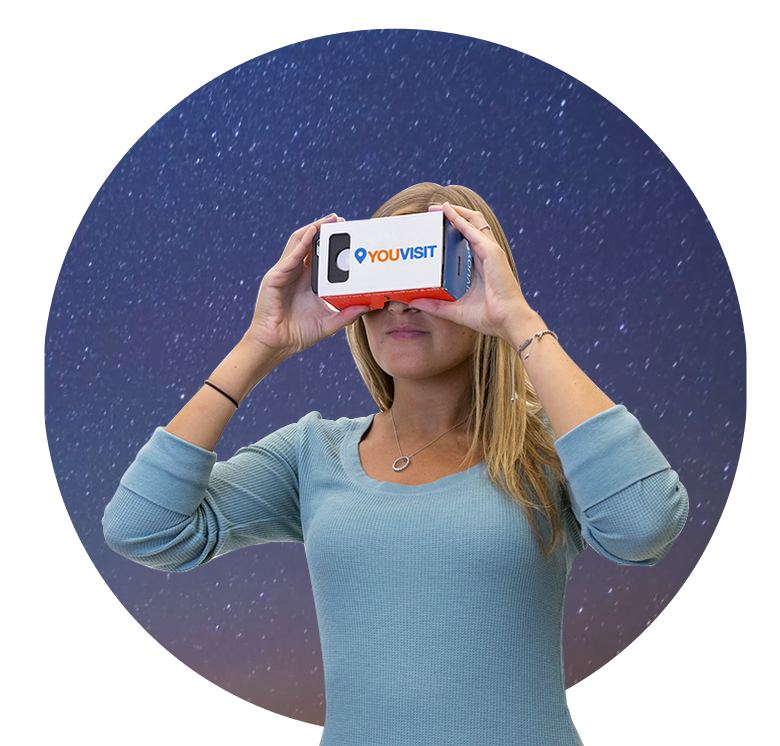Poll Suggests VR Knowledge And Interest Widespread In America
YouVisit is in the business of virtual tours, offering companies a platform to present interactive virtual reality tours of businesses or universities, real estate listings, and even tourist attractions. The company has a large stake in the success of virtual reality and its mass adoption. The company recently conducted a survey to get a feel for current market interest, and the results suggest VR could take off very quickly, especially with the younger demographic.
According to the results YouVisit revealed, the company suggested that as much as 11 percent of the online adult population has already tried some form of virtual reality. It also stated that another 30 percent of the population has expressed an interest in trying VR. These numbers seem to indicate there will be a strong market for virtual reality headsets when the consumer products hit the market in the coming months.
YouVisit pointed out that the data collected indicated that the strongest interest in virtual reality comes from the youngest polled group. The company said the results showed that 18 percent of 18- to 24-year-olds reported having already tried virtual reality and that as many as 46 percent of this age group is eager to give it a try.
The poll's respondents spanned adults of all ages, though, and the company found that interest in VR isn't limited to younger people. YouVisit said that the data points to one in seven American seniors over the age of 65 that expressed interested in virtual reality.
YouVisit did not distinguish which types of VR experiences are most in demand for different age groups, but it did say that interest in VR is dramatically different between male and female respondents. Eight percent of females said they had tried VR, and 21 percent expressed a strong desire to do so. By contrast, 15 percent of men said they have already tried VR and 36 percent are eager to give it a shot.
The type of content male and female respondents are interested in varies, as well. Forty percent of male respondents were interested in virtual reality games, while only 15 percent of women want to game in VR. The company said women are more inclined to watch a movie in VR, with 20 percent saying they would use a VR headset for VR films. The survey results suggest that a quarter of the country's population would watch VR movies, as much as 19 percent would use VR to pick a vacation destination, and 16 percent of people would use it to tour a property they're considering for purchase.
Not surprisingly, the survey suggested that rural respondents have the least interest and knowledge of VR, though this demographic demonstrated higher interest in viewing real estate property tours compared to those from urban areas.
Get Tom's Hardware's best news and in-depth reviews, straight to your inbox.
To conduct this survey, YouVisit turned to Google Consumer Surveys to poll over 1,000 American adults aged 18 and up. Google Consumer Surveys are conducted across a wide demographic and offer samples that can be used to predict trends of a much larger user base.
Follow Kevin Carbotte @pumcypuhoy. Follow us @tomshardware, on Facebook and on Google+.
Kevin Carbotte is a contributing writer for Tom's Hardware who primarily covers VR and AR hardware. He has been writing for us for more than four years.
-
kcarbotte Reply16642143 said:and 100 percent of men will watch VR pron :-)
you might be interested in that, but I have no desire for VR porn.
-
xaero1ne I simply have no interest in VR because of stupid people look wearing those silly headsets. thanks but no thanks. i already get enough flak for being a pc geek, lolReply -
synphul Vr looks like it's becoming more accessible to people, but there's been interest in it for quite some time and yet it's really yet to materialize. I think part of the issue is cost and component size, the other is physical effects. 3d movies were all the rage until many people started getting headaches from it. Watching the occasional movie in 3d (at a theater) is enjoyable but I certainly wouldn't do it often. I felt the eyestrain a bit afterwards.Reply
I played vr games in an arcade 22yrs ago and it was enjoyable but again, not suited to long gaming sessions as the 'norm'. Playing a game for an hour or two (or longer for hardcore gamers out there) on a console or pc, standard controller and screen hand/eye coordination is much less taxing on the senses. After a 15m round in a 'basic' vr game, the physical strain was more noticeable. Took awhile to get your bearings back again.
Considering fully functional vr gaming has been around so long, it shows how slow overall it's been to 'catch on'. It seems to be a lot like set top internet boxes for use with a t.v. Articles crop up, some company tries it out and sparks interest in a handful of people then it fades away until someone brings it back. They're still trying to gain a foothold and work set top internet connectivity into households and webtv was around 20yrs ago.
In terms of tech advancement and adoption by users, that's quite some time ago. By comparison, the household name of 'iphone' has only been around 8yrs. Unfortunately like the set top boxes, vr seems to be one of those fad segments that keeps cropping up but for one reason or another never seems to catch on with any significance.
